- Author Jason Gerald [email protected].
- Public 2023-12-16 10:50.
- Last modified 2025-01-23 12:04.
Many people love Windows 7, but few people like Windows 8. If you've already upgraded but want to go back, you have a few different options. You can install Windows 7 side by side with Windows 8, which allows you to choose the one you want to use when the computer is turned on. You can also install Windows 7 in a "virtual machine," which is a simulated computer running on your desktop. This allows you to use Windows 7 and Windows 8 at the same time on one computer. As a last resort, if you really want to go back, you can reinstall Windows 7, removing Windows 8 in the process.
Step
Method 1 of 3: Installing Windows 7 Side by Side with Windows 8
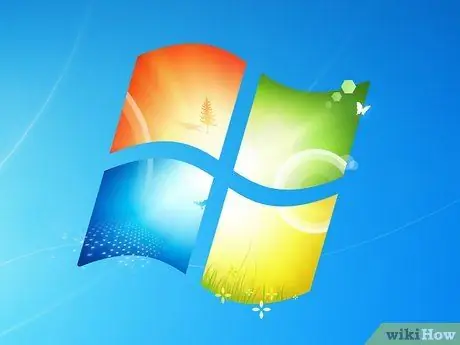
Step 1. Start with Windows 7
Windows 8 includes a new boot manager, which is the software your computer uses to determine which operating system it wants to load. This means that if you want to have a dual boot containing Windows 7 and Windows 8, then Windows 8 must be installed last, or Windows 8 will not boot.

Step 2. Backup important data
Before installing these two operating systems, you must ensure that all important data is safely backed up to a secure storage location. Installing the operating system will erase whatever is currently on the disc. Click here for detailed instructions on how to back up your data.
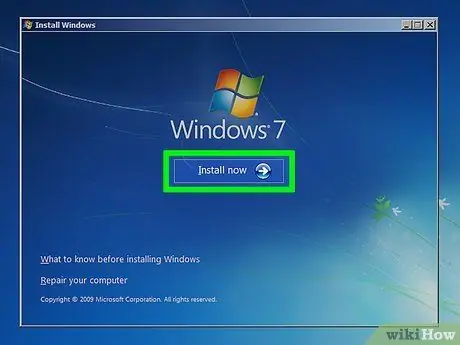
Step 3. Start installing Windows 7
Insert the Windows 7 DVD into your computer and boot from the disc to begin the Windows 7 installation process. Select "Custom (advanced)" as your installation type and follow the prompts until you see a screen that says "Where do you want to install Windows?"
Click here for details on how to start the installation process
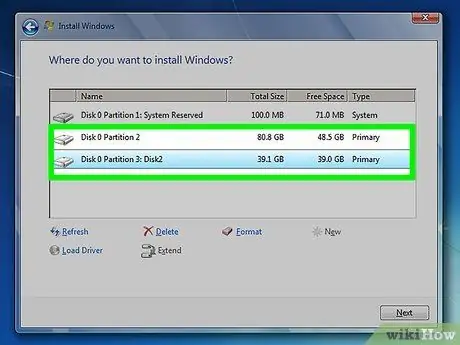
Step 4. Create two different partitions
The "Where do you want to install Windows?" screen allows you to create and format partitions on your hard drive. A partition is a segment of your drive that is separately formatted and labeled with its own drive letter. Each partition acts like a separate hard drive. Note: If you have two separate physical drives, you don't have to worry about partitions, as you can mount each operating system to its own drive.
- Click the "Drive options (advanced)" option.
- Delete all existing partitions. All the space on your drive will be combined into a single chunk called "Unallocated space".
- Select the unallocated space and click "New". Determine how much space you have available for Windows 7. Repeat this to create a partition for Windows 8 (you'll use it later, but by creating it now, you can make things easier). Make sure each partition contains at least 25 GB, larger if you plan to install a lot of programs.
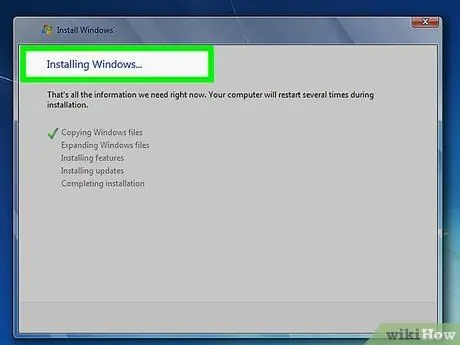
Step 5. Continue to install Windows 7 on the first partition you created
Follow the linked guide above to complete the installation as usual.
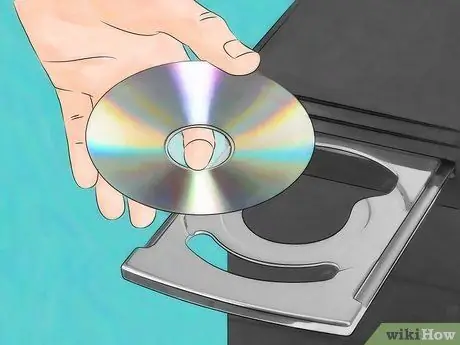
Step 6. Insert your Windows 8 disc and mount it after you install Windows 7
Once Windows 7 is successfully installed on the first partition, you can go ahead and install Windows 8 on the second partition.
- Click here for detailed instructions on how to install Windows 8.
- Select "Custom: Install Windows only (advanced)" for the installation type.
- Make sure you select the correct partition on the "Where do you want to install Windows?" screen. The partition used to install Windows 7 will be marked as "System" in the "Type" column.
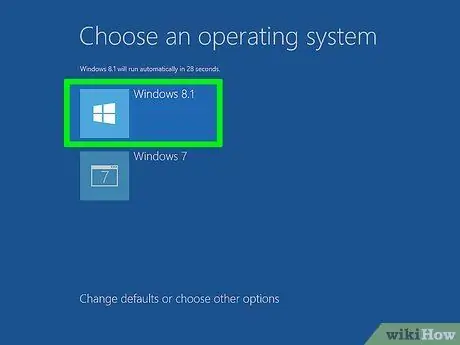
Step 7. Boot into Windows 8
After installing Windows 8, this operating system will be set as your primary operating system. Windows 8 will start automatically if you don't select an operating system from the boot manager.
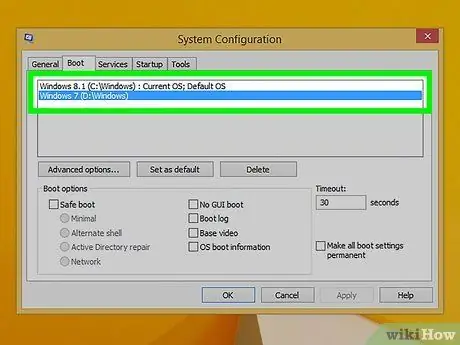
Step 8. Change your boot settings
If you prefer to automatically boot into Windows 7, or want to set the length of time for selecting your options when the computer starts up, you can make changes to your computer's boot settings from within Windows 8.
- Press Win+R, type msconfig, and press Enter.
- Click the Boot tab.
- Select the operating system you want to boot automatically and click Set as default.
- Change the length of time to select your desired operating system when the computer starts up by changing the "Timeout" value.
- Click Apply if you are satisfied with the changes you made.
Method 2 of 3: Using a Virtual Machine
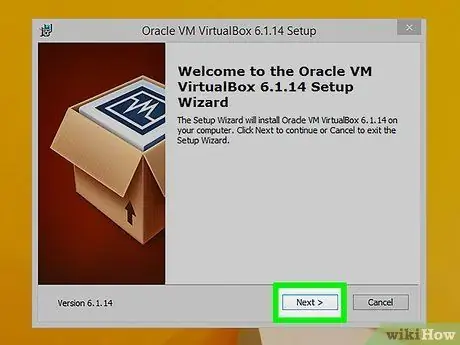
Step 1. Download and install Oracle VM VirtualBox
This program allows you to create a virtual hard drive on your computer which you can then install Windows 7 on. Then you can boot Windows 7 in a window while you are running Windows 8.
- Most users can leave the installation option by default. You can download it at Oracle VM VirtualBox virtualbox.org/.
- Oracle VM VirtualBox is a free program, although several other options are also available.
- This is a great way to get quick access to Windows 7 without having to reboot, but graphics-intensive programs like games won't run well in virtual machines.
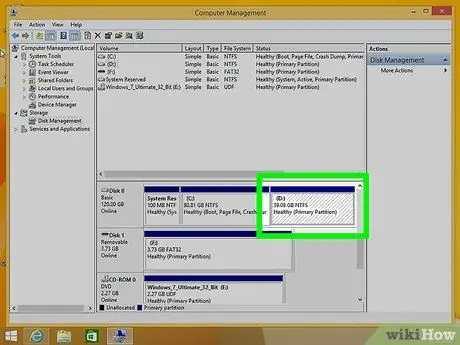
Step 2. Make sure you have enough free space to install Windows 7
When using VirtualBox, you are creating a virtual drive from free space on your hard drive. You should have enough space to get your operating system up and running (about 20 GB), more if you want to install multiple programs.
Make sure you leave enough space for Windows 8 and programs and files
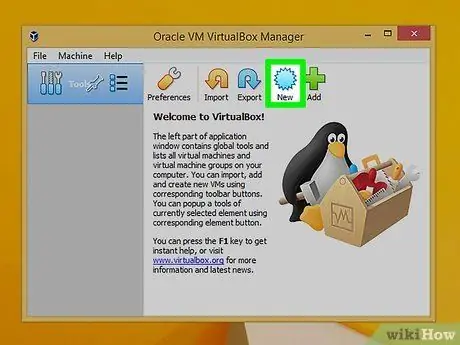
Step 3. Click the "New" button at the top of the VirtualBox window
This will start the process of installing the new virtual operating system.
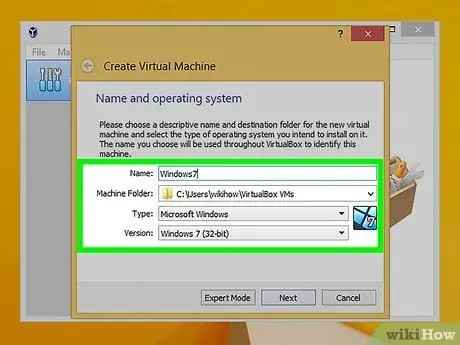
Step 4. Enter the basic information for your virtual machine
You will be asked to give the machine a name and select an operating system.
- You can give the virtual machine any name, although "Windows 7" is probably the most convenient name.
- Select "Microsoft Windows" as the type.
- Select "Windows 7 (32 bit)" or "Windows 7 (64 bit)" depending on the version you have installed. You can see the version on your Windows installation disc. You cannot run a 64-bit virtual machine on a 32-bit computer. Click here for details on how to determine which version of the computer you have.
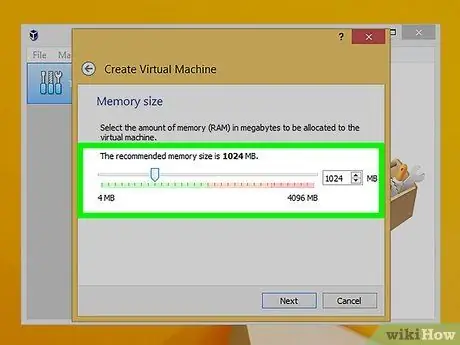
Step 5. Set the amount of memory (RAM) you want to use for the machine
You can only use the RAM of the physical amount installed in your computer. Windows 7 requires 1 GB of RAM (1024 MB), and it is recommended that you allocate about half of the available RAM for good performance.
Don't allocate all your RAM, because your regular operating system will run into errors when the virtual machine starts up
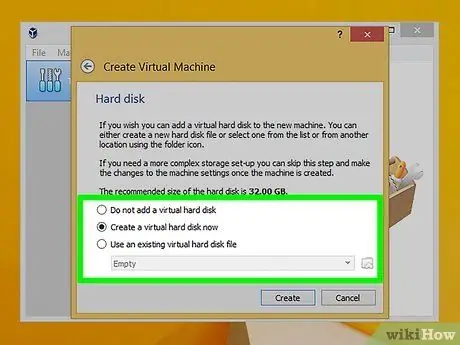
Step 6. Select "Create a virtual hard drive now"
This will start the process of creating a new virtual drive as a place to install Windows 7.
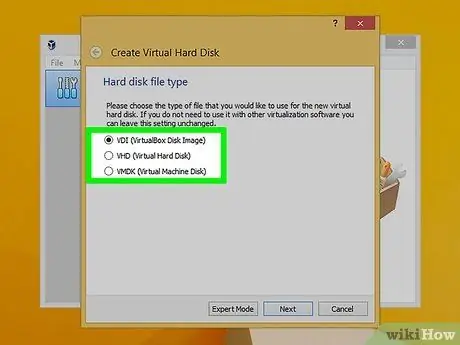
Step 7. Select "VDI" as the hard drive file type
If you know that you will need hard drive image files for other programs, you can select the appropriate file type, but most users leave "VDI" selected anyway.
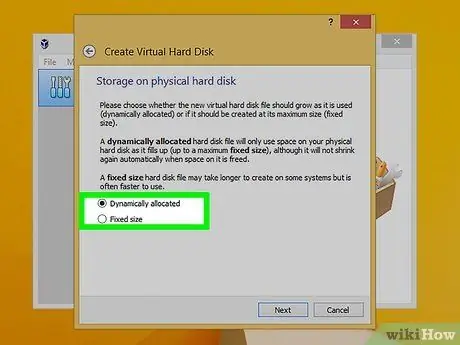
Step 8. Choose between "Dynamically allocated" or "Fixed size" drives
The choice is up to you. Fixed size drives offer better performance, but dynamic drives take up less space on the computer.
If you select "Dynamic", you should still set it to the maximum size
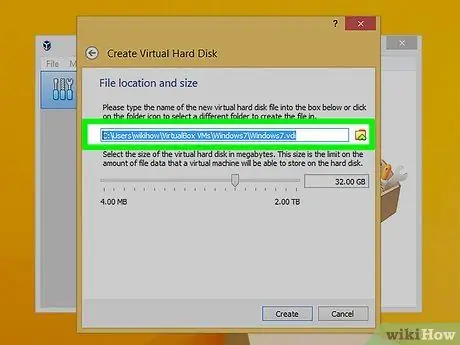
Step 9. Select a location for the virtual drive
Click the Folder icon next to the drive name to select your desired storage location. This is especially useful if you want to store your virtual machine on a storage drive.

Step 10. Set the size or limitation of the drive
Below the virtual drive's name, you'll see a slider that you can use to set its size or limitations. Make sure that you have included at least enough space to comfortably install Windows 7 (20 GB).
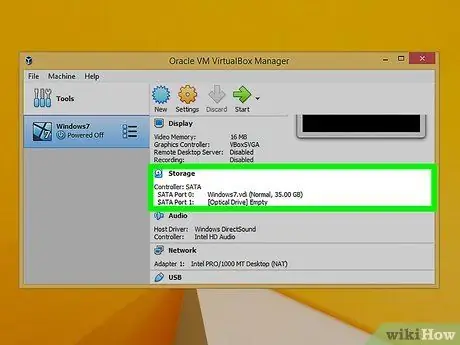
Step 11. Wait for the drive to be created
This can take a while, especially if you are creating a large fixed drive.
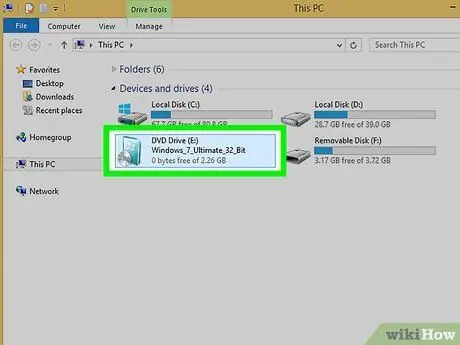
Step 12. Download the Windows 7 ISO file, or insert your installation CD into the DVD drive
You can install Windows 7 from an ISO file just as you would an installation DVD. Both require a valid Product Key.
If you purchased Windows 7 from the Microsoft site, you will most likely be using an ISO
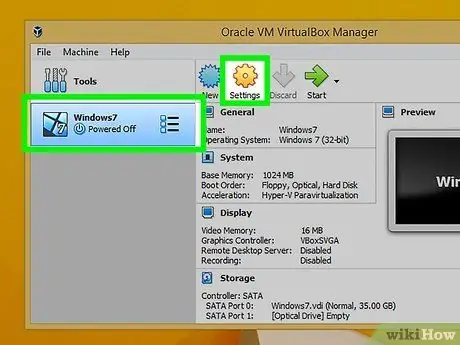
Step 13. Select your new virtual machine in the main VirtualBox window
You will see the details of the system in the mainframe.
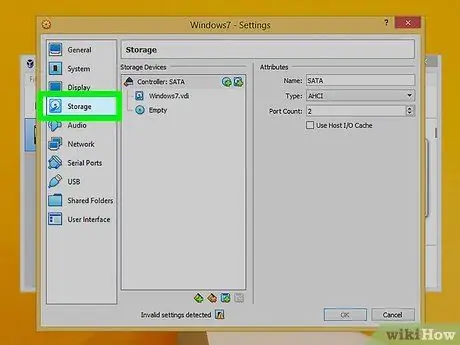
Step 14. Click the "Storage" header
This will open the Storage menu, which you can use to select your installation disc or ISO.

Step 15. Select your virtual CD/DVD drive
Chances are the drive will say "Empty" (empty). You will see Attributes and Information on the right.
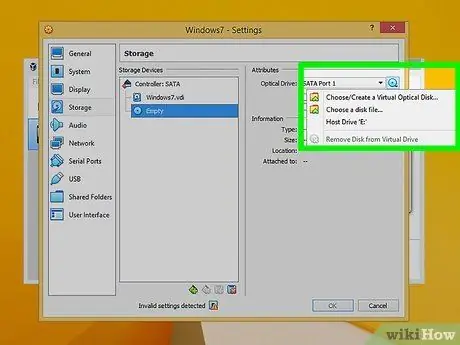
Step 16. Click the small Disc button in the Attributes section
Choose how you want the installation disc to load.
- If you have already inserted the installation disc into your computer, select the appropriate "host drive". The term "host" refers to your physical computer.
- If you are mounting from an ISO, select "Choose a virtual CD/DVD disk file". This will open a file browser, which will allow you to browse and select your ISO file.

Step 17. Run your virtual machine
Once you have selected the installation media, you can run the virtual machine and start installing Windows 7. Select your Windows 7 virtual machine and click "Start". A new window will open that mimics the appearance of another computer.

Step 18. Press a button when prompted to start the pairing
You will see a message indicating when you should press any key on your keyboard.
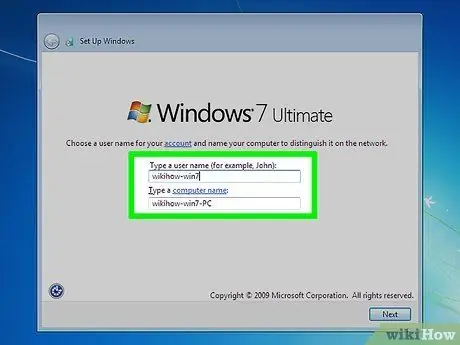
Step 19. Follow the prompts to install Windows 7
The installation will proceed from this point as if you were installing it on a physical computer. Click here for detailed instructions on how to complete the Windows 7 installation.
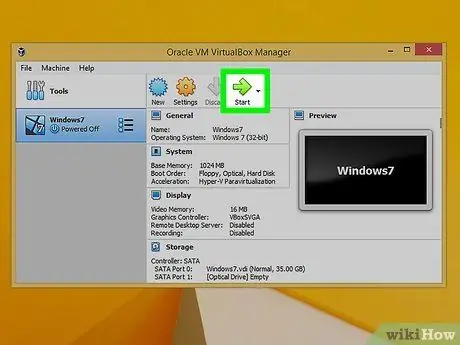
Step 20. Run your virtual machine
After installing Windows 7, you can start it at any time by opening VirtualBox, selecting your Windows 7 virtual machine, and clicking Start. You can also right-click the virtual machine in VirtualBox to create a shortcut on the desktop that allows you to launch the machine with one click.
Method 3 of 3: Replacing Windows 8 with Windows 7
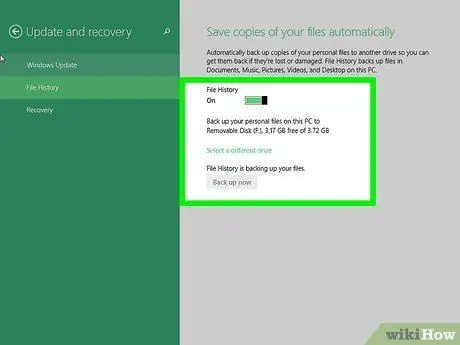
Step 1. Backup important files
Replacing Windows 8 with Windows 7 will erase all the data on your hard drive, so make sure you back up everything you need to save to a safe location. Click here for detailed instructions on how to quickly back up your important files.
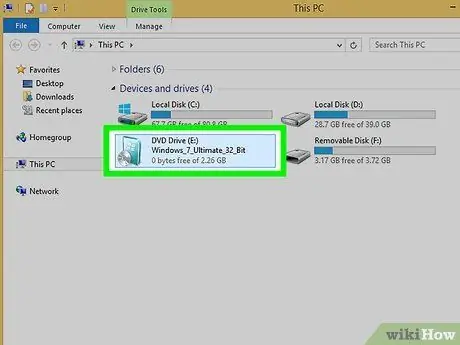
Step 2. Enter your Windows 7 installation file
If you only have the ISO file, you will need to burn the file to a DVD or create a bootable USB drive.
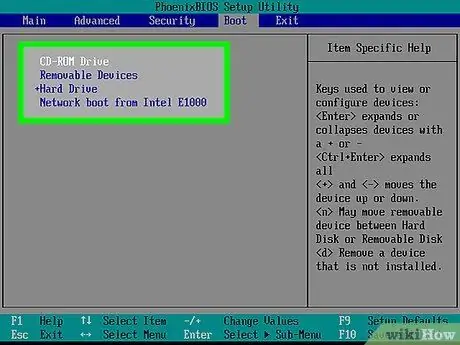
Step 3. Boot your computer from the installation drive
You can set the boot order in your computer's BIOS menu, which can be accessed while the computer is booting by pressing the appropriate key. Keys that are usually used include F2, F10, F11, and Del.
Navigate to the BOOT menu to change the boot order of your drive. Make sure that your installation drive is set to be the first device to boot

Step 4. Save your changes and reboot
You will be prompted to press a button to start the installation process.
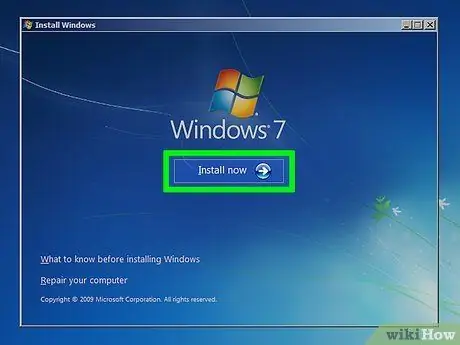
Step 5. Follow the prompts to start the installation
You will be asked to select your language and input settings, and agree to the terms and license.
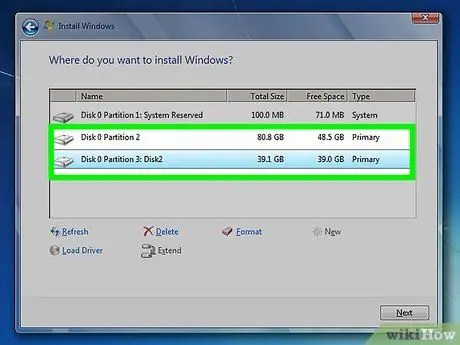
Step 6. Select your Windows 8 partition when asked where you want to mount it
Your Windows 7 partition will be marked as "System" in the "Type" column.
Installing it on the Windows 8 partition will erase all the data on it

Step 7. Complete the installation procedure
You can follow the prompts to complete the installation. Click here for detailed instructions on how to complete the Windows 7 installation.






